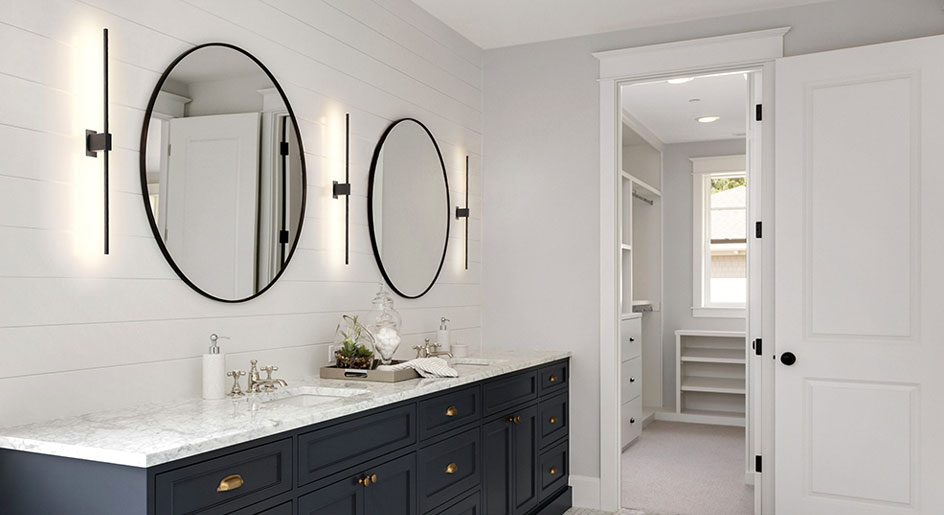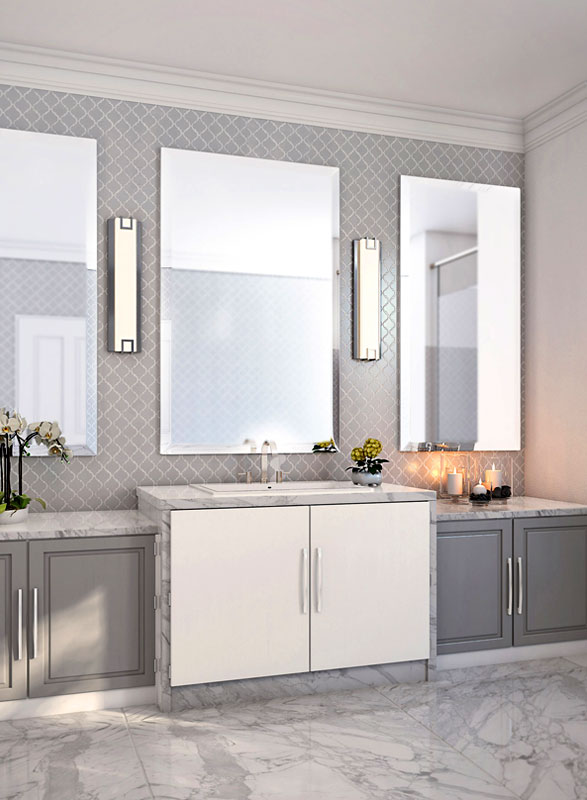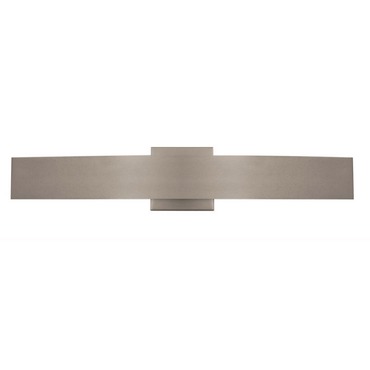-
0
Your CartOrder Subtotal0.00
- 0

How to Pick the
Best Bathroom Vanity Lighting
Bathrooms can pose an interesting challenge to lighting design. Like kitchens, bathrooms require practical and functional lighting solutions for a primarily task-oriented space. Grooming requires just the right amount of well-placed lighting. Too little and you wonβt be able to see what you're doing. Too much lighting, or poor placement can cause glare issues. However, like kitchens, you also want something beautiful. Something with style and quality that both suits your dΓ©cor and creates a soothing environment.
How do you pick the perfect bathroom vanity lighting?
It's not as difficult as you might imagine. These days, a wide selection of wall mounted bath bars and vanity lights are available to provide the light you need in virtually any style. There are a few things to consider when choosing and installing your bathroom lighting. The following questions are the ones I hear most often from my customers (homeowners and interior designers alike).
What are my options for really nice mirror lighting? Is that the same thing as vanity lighting? Where do I start?
Yes, vanity lighting may be defined as a light fixture installed above, or alongside a mirror. We offer many vanity lighting options with excellent and flattering light output.
Two measures to remember when selecting fixtures for your bathroom are CRI (Color Rendering Index), and color temperature. In terms of CRI, choose a fixture with a high CRI (90+ is preferred). Incandescent and halogen light sources always have the best CRI β 100 β meaning they most accurately render colors. If you wish to use an energy-efficient LED or fluorescent light source, ensure your selection has a CRI or at least 90. This provides excellent color rendering in bathroom settings.
For color temperature, try selecting fixtures / light sources with a warm color temperature (2700K β 3000K). Many find warm color temperatures more flattering than cool ones, because they are similar to the incandescent lights most people have become used to. When I meet with clients, I work with them directly to determine the color temperature option they like best. That said, you never want to go above 3500K in a bathroom lighting application β it's just not as flattering and inviting as warmer temperatures.
In terms of fixtures, the Twiggy LED S1 fixture is my personal favorite. It's a high quality fixture with minimalist styling and great light output, it's cool to the touch, and there are so many lengths to choose from. Generally 36-48 inch lengths are best for vanity lighting applications, but this also depends on the size of your mirror. Also, I highly recommend installing a low voltage electronic dimmer for this fixture to control its light output, and create a different atmosphere as needed.
At what height should I install wall mounted bathroom lighting such as bath bars and vanity lighting?
If you are mounting wall sconces on each side of your mirror, you should mount them with the center of the fixtures about 60" high and about 28" apart. If you are mounting a bath bar above the mirror, it should be mounted about 78" high. These are generally-accepted measures from the American Lighting Association.
At what angle should my lighting be mounted?
This depends on the dimensions of your mirror or medicine cabinet. If the fixture is enclosed with a diffuser to create comfortable distribution of light, you don't necessarily need an angled bath light. Some of the bath bars that we offer are angled, or are able to be angled. The Bardot, Audrey, and Twiggy Hinged LED vanity lights by PureEdge Lighting are all great selections that are able to direct the light towards you at about a 45 degree angle.
What are my options for energy efficient bathroom vanity lighting? Are LED fixtures available?
LED and fluorescent fixtures are available for bathroom lighting. These are great energy efficient options that last a long time, and many LED Bath Bars and LED Vanity Lights are dimmable when paired with the appropriate dimmer. Traditional Incandescent and Halogen vanities are also dimmable, which can extend lamp life.
Since bathrooms can get pretty wet, do I need special bathroom lighting, or can I use the normal fixtures that I'd put elsewhere in my house?
For your shower and/or tub area, you would definitely need shower lighting that is wet rated. If you are interested in recessed cans, there are many options of shower-rated trims to choose from. Elsewhere in your bathroom you can use regular fixtures, but keep in mind that fabric typically stains from moisture or splashing, so glass, metal and plastic are better selections for bathroom lighting fixtures.
How much light is the ideal amount for a bathroom?
I always say the more lighting the better, because you can always dim lights. You want a lot of light for the bathroom β about 50-75 foot candles on your face β because of the variety of tasks done every day in that room. Consider a layered lighting plan for the bathroom. This is an ideal solution that can address the different lighting needs various areas in the bathroom.
What is layered lighting, and why is it important in bathrooms?
Layered lighting is very important for any room, but especially bathrooms. Because there are a wide variety of tasks done in a bathroom, (such as shaving, cleaning, grooming, applying makeup, and other general tasks), it is good to have layered lighting options designed for the specific needs of each task. For instance, in addition to bath bars or bathroom vanity lights at the mirror for face-based tasks, I also like to install a downlight mounted over the sink, about 12" from the wall (with a dimmer, of course). This provides general illumination that fills the area over the sink. Mounting it back from the wall keeps the light out of your eyes.
Other examples of light layers in bathrooms include wall sconces to help define the space, small chandeliers to provide general illumination, or even LED uplights installed in the shower for a unique take on task lighting in the shower. I like adding Edge Lighting's Sun3 LED fixtures as uplights in the corners of the shower or using Port LED fixtures 3-4 inches off the floor in the wall or tile. Use different dimmers for each fixture to set different moods and accommodate various tasks.
See our other article on bathroom lighting design to read more about the importance and effects of layered lighting in bathrooms.
















